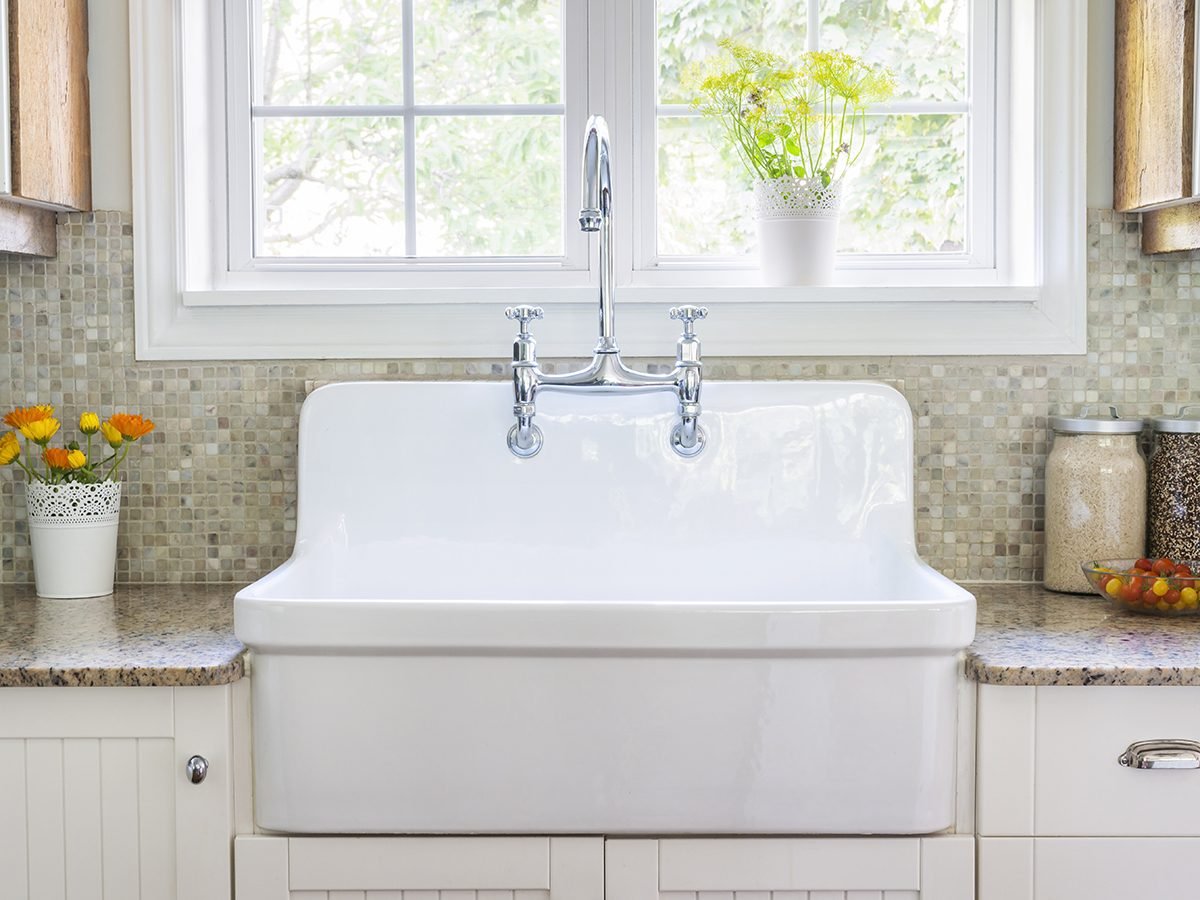
Charles the Butler shares his ultimate kitchen cleaning guide
A kitchen should be functional, and attention must be paid to every housekeeping detail. From a hygiene perspective, the kitchen must be kept clean or else the food prepared in it may become contaminated and cause illness. I find that if you clean as you go, it becomes much easier to maintain.
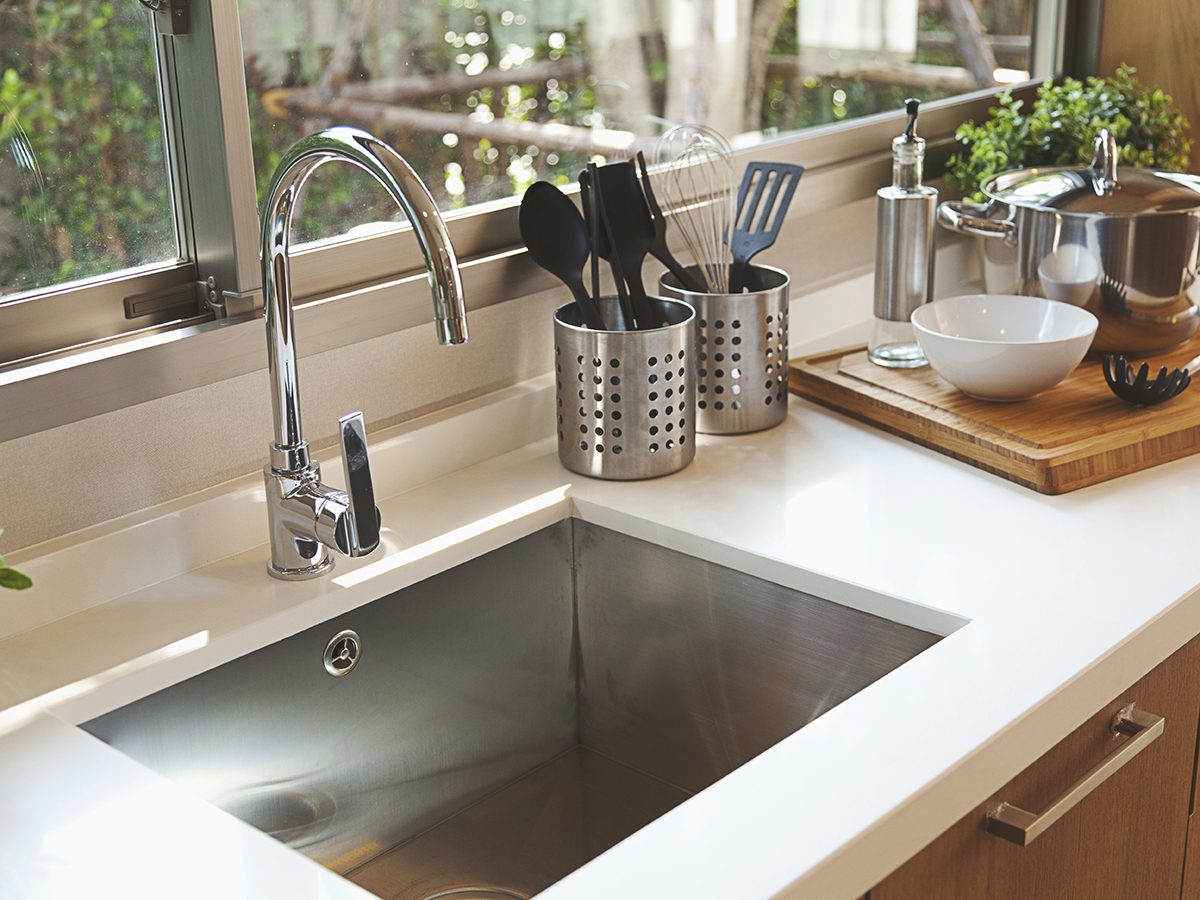
How to clean a kitchen sink
The kitchen sink is one of the dirtiest spots in the house! That is because, unlike bathroom surfaces (which we clean with disinfectant cleaners), most of us wash kitchen surfaces with just soap and water. (Don’t miss these indispensable bathroom cleaning tips.)
- Clean the sink with a pH-neutral dish soap or a cream cleanser. Never use anything abrasive on the surface, and always wipe following the grain of the surface.
- Dry the surface to avoid marks.
- If your stainless steel sink looks dull, apply stainless steel polish or mineral oil to a soft cloth and buff.
- Once or twice a week, disinfect the sink with a disinfectant cleaner. Avoid cleaners with chlorine bleach.
Foods that contain acids and/or salt (citrus, vinegar, pickles, mustards, etc.) will stain and corrode stainless steel if they rest on the surface for too long, so don’t let these items linger on a stainless steel sink.
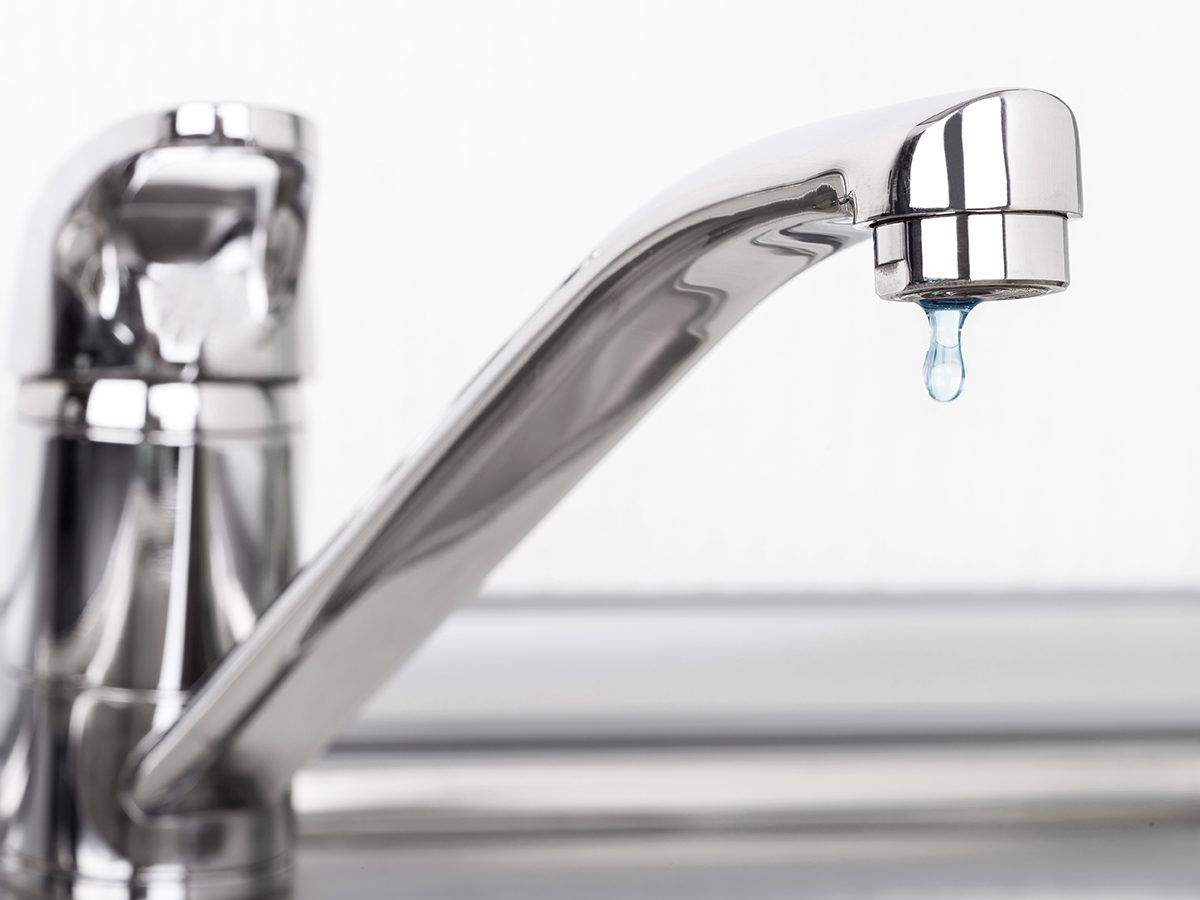
How to clean chrome hardware
Chrome is a resilient plated metal.
- Clean with a soft cloth dampened with an all-purpose cleaner. Never use anything abrasive on polished metal, as it can scratch very easily.
- Dry the surface and buff to a shine.
Don’t forget to clean the base of your taps. A toothbrush is the perfect tool for getting into these areas.
Here are 10 cleaning myths you need to stop believing (and what to do instead).

How to clean a backsplash
- Wipe down your backsplash regularly.
- Clean the surface using all-purpose cleaner to remove grease buildup.
- Rinse and dry thoroughly.
Find out the kitchen organizing mistakes everyone makes.

How to clean kitchen countertops
Kitchen countertops are high-traffic areas in terms of usage. In a busy kitchen, these surfaces are in constant contact with food, so they need to be cleaned often, and sanitized or disinfected regularly. Always clean the surface before sanitizing or disinfecting:
- Wipe the counter clean of food debris and spills.
- Wash the counter with warm water and pH-neutral dish soap.
- Rinse with clean, warm water, then dry thoroughly.
Remember, never use abrasive cleaners, as you risk scratching the countertop, and never use acid (vinegar, lemon juice, etc.) on stone surfaces.
Discover more surfaces you should never clean with vinegar.

How to clean the interior of an oven
After each use, once the oven has cooled, wipe the surface with a solution of pH-neutral dish soap and water to remove grease and spills. This will help reduce the overall number of deep cleans required. Many ovens have a self-cleaning feature, which makes cleanup easy—check the manual if you are unsure.
If you have a manual-clean oven, you will need oven cleaner and proper safety gear: rubber gloves, safety goggles and even a mask. Always make sure to read and follow the instructions on the packaging before you start cleaning.
- Cover the floor under the oven door with newspaper to catch any drips.
- Remove the oven racks, pans and any other items. Soak in hot, soapy water.
- With a soft rag, remove any loose dirt from the sides and bottom of the oven area.
- Cover the light bulb and exposed heating element with foil to protect it from the oven cleaner spray.
- Open a window for ventilation. Apply the oven cleaner to all sides, top and bottom of the oven. Let it sit for the required time listed on the package.
- Use a wet sponge or rag to wipe off the cleaning product. Rinse the sponge or rag in fresh, clean water, and repeat the process until the surface is clean and free of residue. Wipe the surface dry with a clean, dry rag.
- Scrub the racks clean. Rinse with fresh water, then dry thoroughly and return to the oven.

How to clean the exterior of an oven
Always wait until surfaces are cool before cleaning. Clean spills and splatters as soon as possible, as they will become harder to remove over time. Clean the exterior surface of the oven with a solution of pH-neutral dish soap and warm water daily, or as required.
- Wipe down the surface with a soft cloth dampened in the cleaning solution. Wipe the surface again with a cloth dampened in fresh water to remove any reside, then wipe dry. Always wipe surface in the direction of the grain/brushed finish.
- When the oven door window is cool, spray glass cleaner or the multi-purpose cleaner on a soft cloth and clean the window.
- When cleaning the control panel, never spray anything directly onto the panel. Instead, apply the cleaning solution onto a soft cloth and clean the surface.
- Remove and clean the knobs monthly.
Check out 30 nearly-forgotten house cleaning tips from the past.
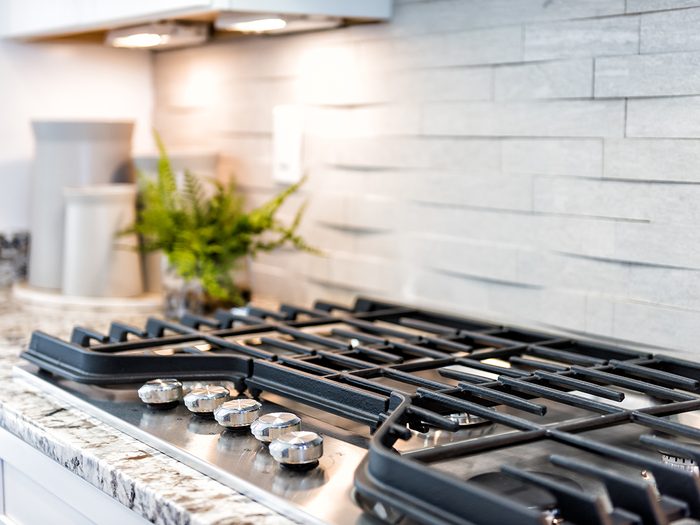
How to clean a gas stove top
After each use, wipe the surface with a soft cloth or sponge dampened in hot soapy water to remove grease and spills.
Gas stovetops will vary from model to model. Always consult the owner’s manual for correct cleaning procedures. Occasionally, the tiny holes supplying gas to the burner can get clogged. To unclog them, turn off the gas valve and use a paperclip or a pin to remove debris.
- Turn off the gas and pilot light.
- Soak the removable parts of the burner in hot, soapy water.
- Scrub the burners with a mildly abrasive nylon sponge, then dry them thoroughly to prevent rust.
- Clean the stovetop with a soft cloth dampened in a solution of pH-neutral dish soap and warm water. Follow the grain of the finish when wiping clean. Rinse off any soapy residue, and dry thoroughly.
- Turn the gas and pilot light back on.
How to clean a ceramic stove top
After each use, wipe the surface with a soft cloth or sponge dampened in hot soapy water to remove grease and spills.
Use a plastic scraper to remove any baked-on residue. Then wash the smooth stovetop surface with a solution of pH-neutral dish soap and warm water—acidic cleaners will damage the ceramic.
Find out the surprising ways you’re shortening the life of your stove top.
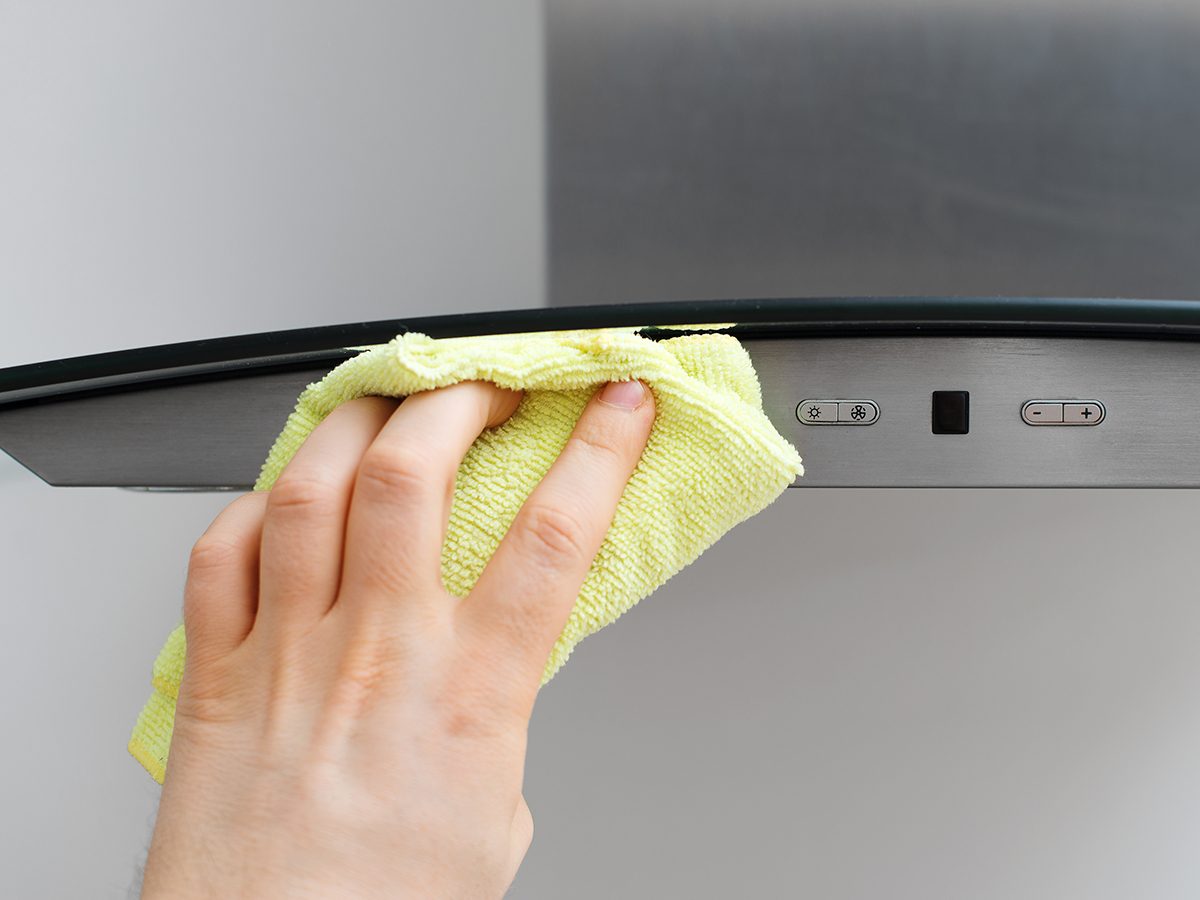
How to clean an exhaust hood
Start by clearing the surrounding area, including any pots, pans and other items that might be hung from or near the hood. To do a proper job that area must be clear.
- Pull the filters out of the exhaust hood and clean them as recommended by the manufacturer.
- Clean the inside of the hood with an all-purpose cleaner. Most commercial hoods are stainless steel, and the all-purpose cleaner should be enough to remove the grease; if not, increase the amount of pH-neutral dish soap in the washing solution.
- Depending on the type of surface, use an all-purpose cleaner and microfiber cloth to clean the exterior of the exhaust hood. If there were items hanging from the hood, wash them in hot, soapy water.

How to clean a refrigerator
Clean the exterior surface and door handles of your refrigerator daily with a soft cloth dampened in a solution of pH-neutral dish soap and warm water. Rinse off soapy residue with the cloth dampened in fresh water, then dry thoroughly, always wiping in the direction of the grain/brushed finish.
Unplug the refrigerator and clean the condenser coils every 3 to 6 months, using the soft brush attachment of the vacuum to remove dust and dirt.
Could you be shortening the life of your refrigerator without realizing it?
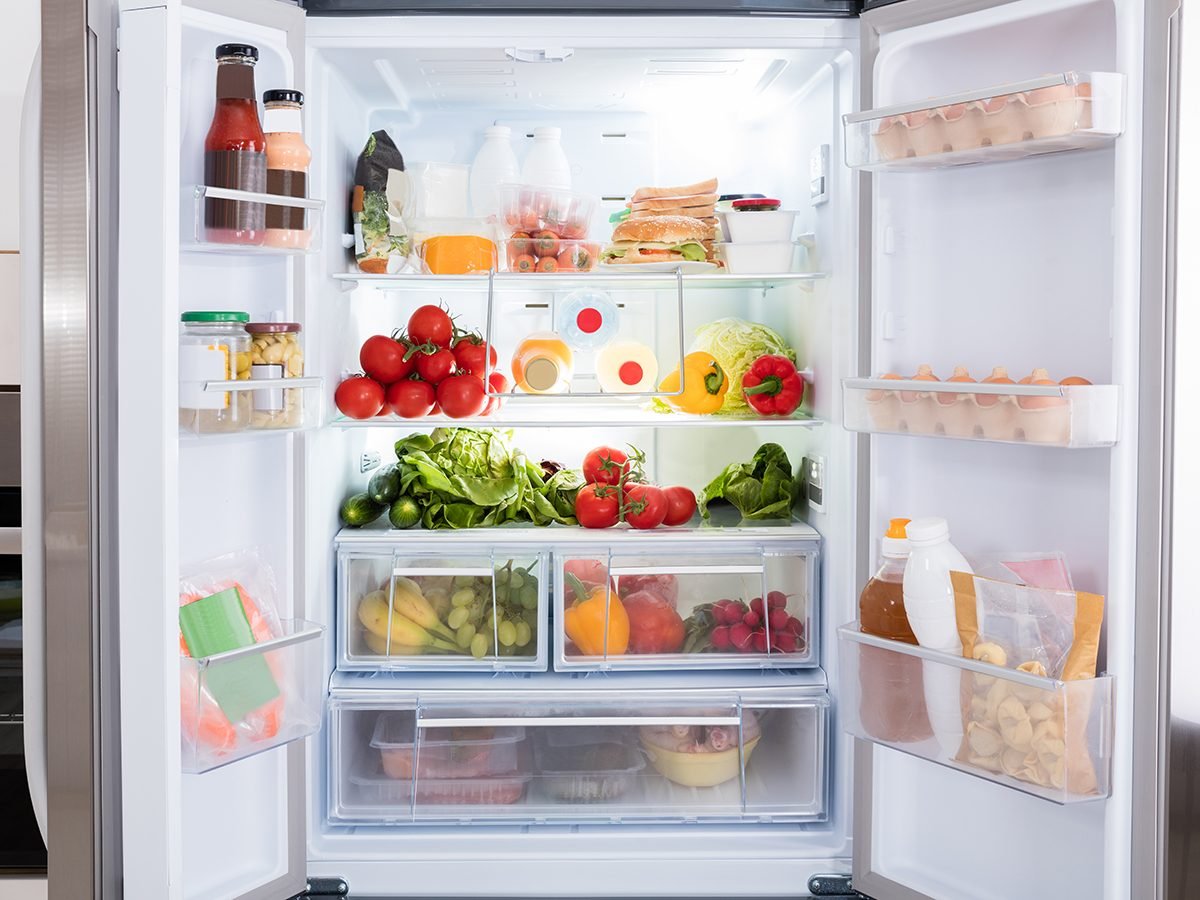
How to clean the interior of a refrigerator
Keep fridge interiors clean by wiping up spills, drips and grime immediately, and do a deep clean approximately every 3 months. The best time to deep clean the fridge is when the shelves are close to bare, so you’ll have fewer items to remove.
-
- Unplug or shut off the power to the fridge.
- Remove everything from the refrigerator, and discard any expired food items. Store perishables in a cooler with an ice pack while you clean.
- Prepare a cleaning solution of pH-neutral dish soap, warm water and baking soda. (Find out more brilliant uses for baking soda all around the house.)
- Take out the shelves, drawers and other removable parts. Hand wash in the cleaning solution, rinse with fresh water and dry thoroughly.
- Working from the top downwards, clean the interior surfaces with a sponge or soft cloth dampened in the cleaning solution. Rinse the surface with the soft cloth dampened in fresh water, then dry thoroughly. Avoid getting water on lights and any electronic components.
- Once the interior is thoroughly dry, replace the clean shelves, drawers and other removable parts. Plug in the refrigerator.
- Wipe the contents of the fridge clean and return them to the shelves.
Don’t miss HGTV star Bryan Baeumler’s best kitchen reno tips.

How to clean a refrigerator icemaker
Clean the exterior surface with a soft cloth dampened in a solution of pH-neutral dish soap and warm water. Rinse off soapy residue with the cloth dampened in fresh water, then dry thoroughly.
Once a month, toss out all the ice and sanitize the ice storage bin with a solution of equal parts vinegar and water.
Twice a year, clean the ice-making system to avoid mineral build-up. Procedures will vary from model to model, so check your manual for the manufacturer’s prescribed cleaning procedure.
Here’s what it means if you see grey ice cubes in your freezer.
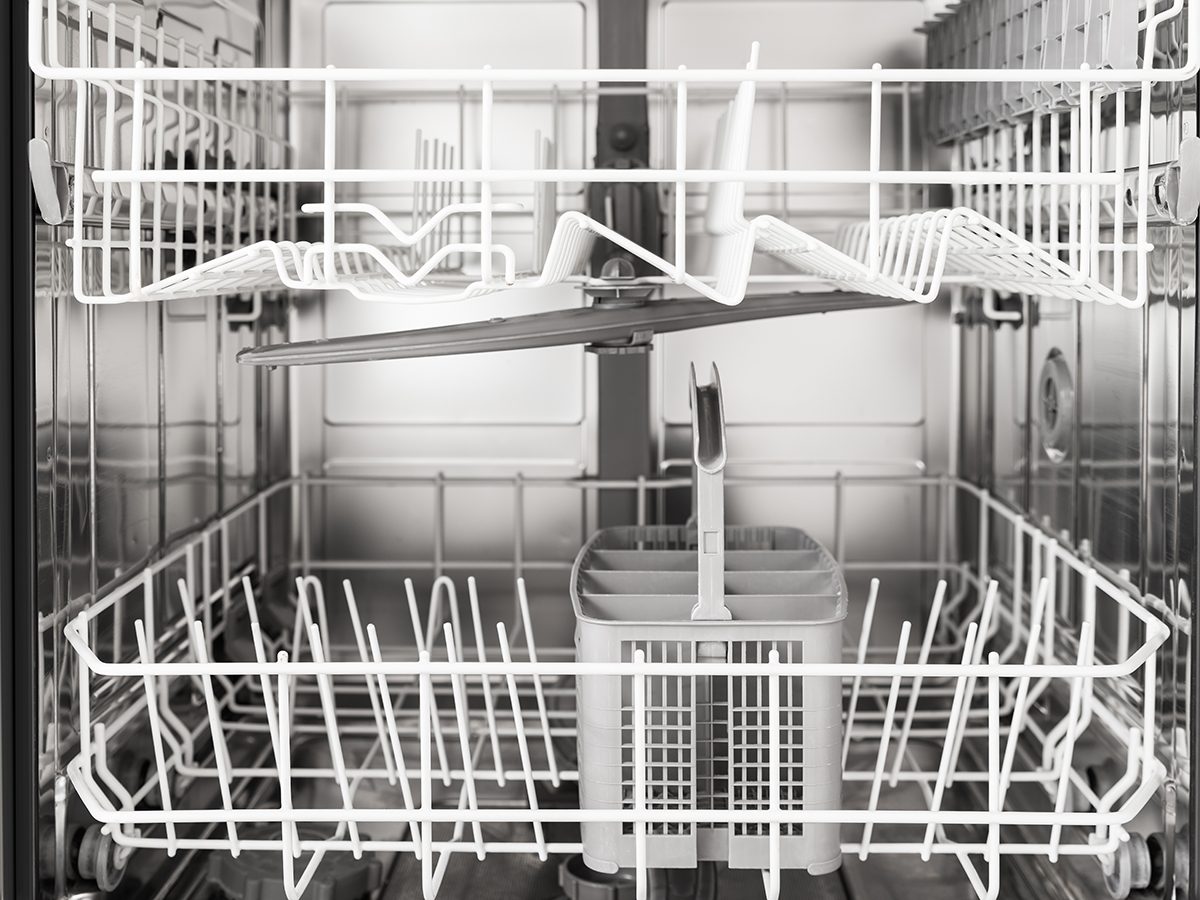
How to clean a dishwasher
- Use an all-purpose cleaner to clean the dishwasher exterior, door gasket and door seal daily.
- Once a month, use vinegar or a commercial dishwasher cleaner to descale and deodorize. Empty the dishwasher and run it through a normal cycle with the cleaning agent.
- Check and clean the filter system and spray arms monthly or as required.
Find out what’s causing those white streaks on your dishes.
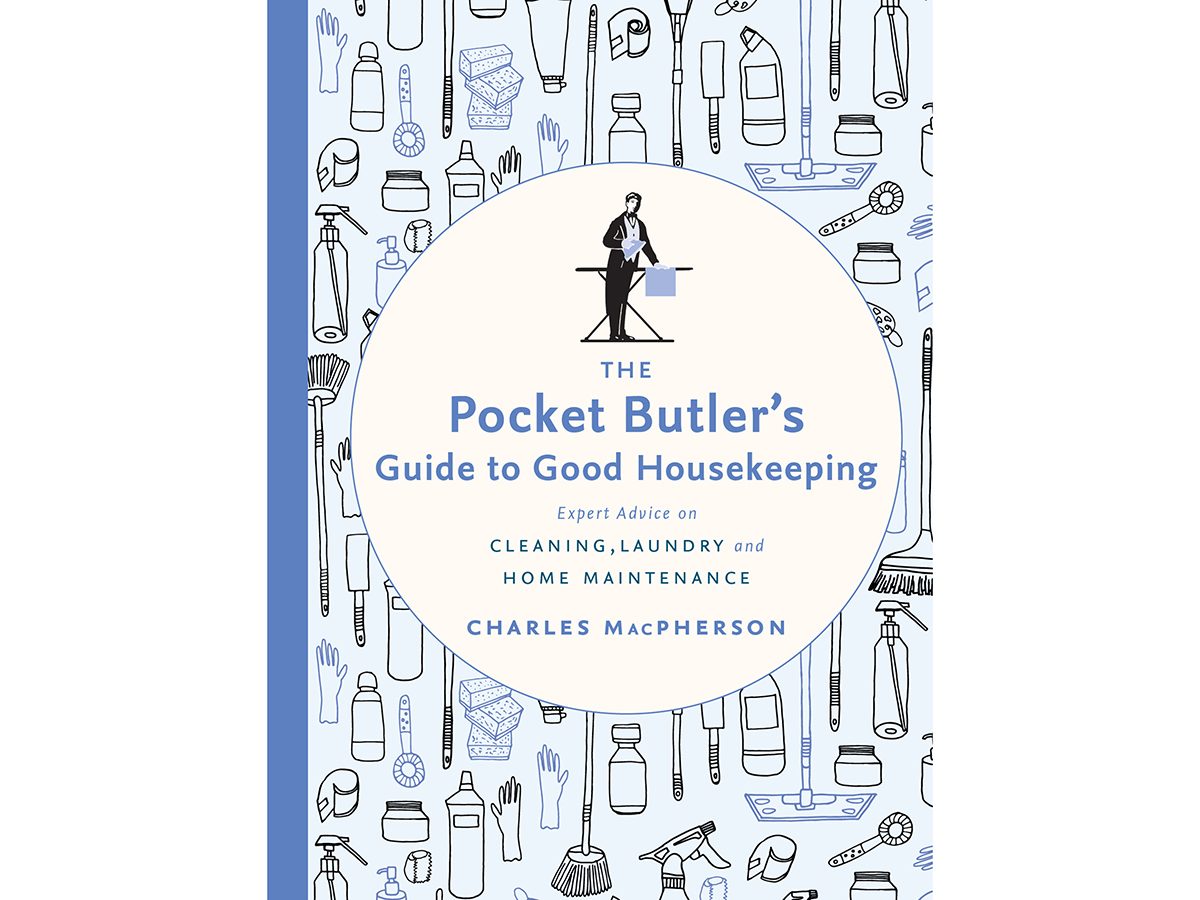
The Pocket Butler’s Guide to Good Housekeeping
For more clever cleaning tricks that actually work, check out Charles the Butler’s indispensable book, The Pocket Butler’s Guide to Good Housekeeping (Appetite by Random House, 2020). With step-by-step instructions for cleaning, organizing and maintaining every room in your home, The Pocket Butler’s Guide to Good Housekeeping comprises information-packed chapters on cleaning, laundry, organization and more. Looking for recipes for natural and gentle cleaning products? Want to finally master those crisp hospital corners for making your bed? Look no further than this definitive cleaning caddy companion from Charles the Butler.
Excerpted from The Pocket Butler’s Guide to Good Housekeeping by Charles MacPherson, Copyright © 2020 Charles MacPherson. Published by Appetite by Random House®, a division of Penguin Random House Canada Limited. Reproduced by arrangement with the Publisher. All rights reserved.
Next, check out 13 cleaning hacks that take the hassle out of housekeeping.